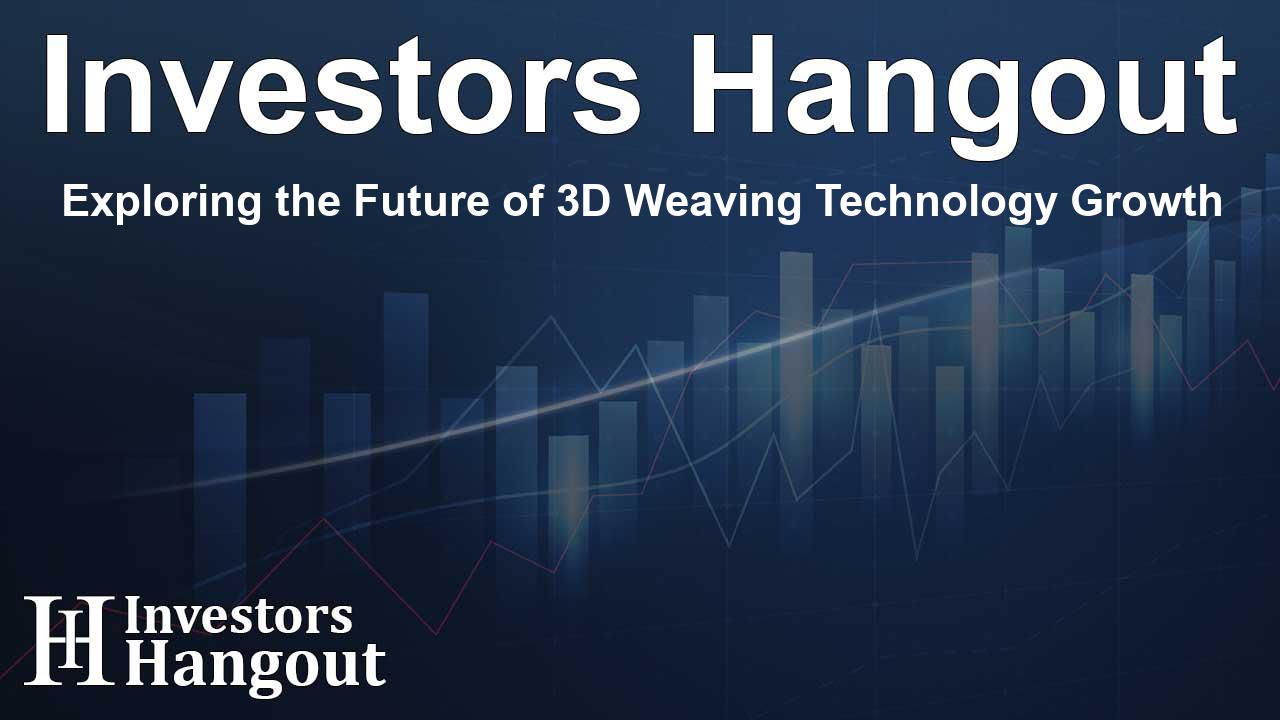Exploring the Future of 3D Weaving Technology Growth

3D Weaving Market - An Overview
The global 3D weaving market is on a promising trajectory, projected to escalate from USD 32.8 million to USD 59.7 million over the next few years. This growth, with a compound annual growth rate (CAGR) of 12.7%, is largely fueled by the burgeoning renewable energy sector and a surge in infrastructure projects worldwide.
Drivers Behind Market Growth
The adoption of 3D woven fabrics is seeing significant momentum, primarily due to their application in vital sectors such as construction and renewable energy. The call for lightweight, durable, and corrosion-resistant materials is creating a robust demand for 3D weaving technology, particularly in industries looking for efficient and sustainable solutions. As sectors like wind energy flourish, the need for advanced composites and efficient production methods becomes paramount.
Applications in Renewable Energy
In renewable energy applications, 3D woven composite parts are integral to manufacturing components like wind turbine blades, where strength and lightweight characteristics are essential. These materials not only enhance performance but also contribute to the longevity of structures subjected to varying environmental conditions.
Automotive Industry Influence
Equally noteworthy is the automotive sector, which is anticipated to witness considerable growth in the use of 3D weaving technologies. The shift toward electric vehicles highlights the increasing focus on lightweight materials that optimize fuel efficiency while ensuring safety standards are met. With superior strength-to-weight ratios, 3D woven composites are being adopted for various vehicle components.
Technological Advancements in Composites
The rise of composite textile weaving machines is instrumental in this market expansion, as these machines provide flexibility to adapt to various fiber technologies. Their ability to facilitate the creation of application-specific woven products enhances their appeal. Consequently, they are being progressively regarded as critical investments by firms aiming to excel in innovation and product differentiation.
The Role of North America
North America is poised to experience substantial growth in the 3D weaving market, outpaced only by the demand for advanced materials in industries like aerospace and defense. This region houses leading manufacturers and a skilled workforce focused on development, which is vital for maintaining competitive capabilities in complex component manufacturing.
Emerging Applications and Industry Leadership
Additionally, the region benefits from a dense network of research initiatives and collaborative opportunities between academic institutions and industry players, fostering innovation in textile engineering and composite applications. As a result, North America not only continues to lead the charge in aerospace technology but also explores new frontiers in sectors like smart textiles and personalized medical solutions.
Market Challenges and Opportunities
The journey towards expansion is not without its hurdles. The primary challenges include prolonged product development cycles and rigorous qualification requirements, particularly in sectors that demand high reliability. However, these challenges also pave the way for opportunities, especially in the customization of military and tactical gear.
Future Outlook
As we look ahead, the 3D weaving market stands as a pivotal domain promising significant advancements. Companies are encouraged to invest in research and development to navigate the challenges while capitalizing on emerging trends to position themselves strategically for the future.
Frequently Asked Questions
What is the projected growth of the 3D weaving market?
The 3D weaving market is expected to grow from USD 32.8 million to USD 59.7 million by 2030, reflecting a CAGR of 12.7%.
What are the key drivers for this market growth?
Significant drivers include increased demand in renewable energy and automotive sectors for lightweight and durable materials.
How does 3D weaving technology benefit industries?
3D weaving technology allows for the production of complex parts that are lightweight, strong, and suitable for various applications.
Which regions are leading in the adoption of 3D weaving technology?
North America is notably leading due to its focus on innovation in the aerospace and automotive industries.
What challenges does the market face?
The primary challenges include extended product development cycles and a need for thorough qualification processes to meet industry standards.
About The Author
Contact Logan Wright privately here. Or send an email with ATTN: Logan Wright as the subject to contact@investorshangout.com.
About Investors Hangout
Investors Hangout is a leading online stock forum for financial discussion and learning, offering a wide range of free tools and resources. It draws in traders of all levels, who exchange market knowledge, investigate trading tactics, and keep an eye on industry developments in real time. Featuring financial articles, stock message boards, quotes, charts, company profiles, and live news updates. Through cooperative learning and a wealth of informational resources, it helps users from novices creating their first portfolios to experts honing their techniques. Join Investors Hangout today: https://investorshangout.com/
The content of this article is based on factual, publicly available information and does not represent legal, financial, or investment advice. Investors Hangout does not offer financial advice, and the author is not a licensed financial advisor. Consult a qualified advisor before making any financial or investment decisions based on this article. This article should not be considered advice to purchase, sell, or hold any securities or other investments. If any of the material provided here is inaccurate, please contact us for corrections.
